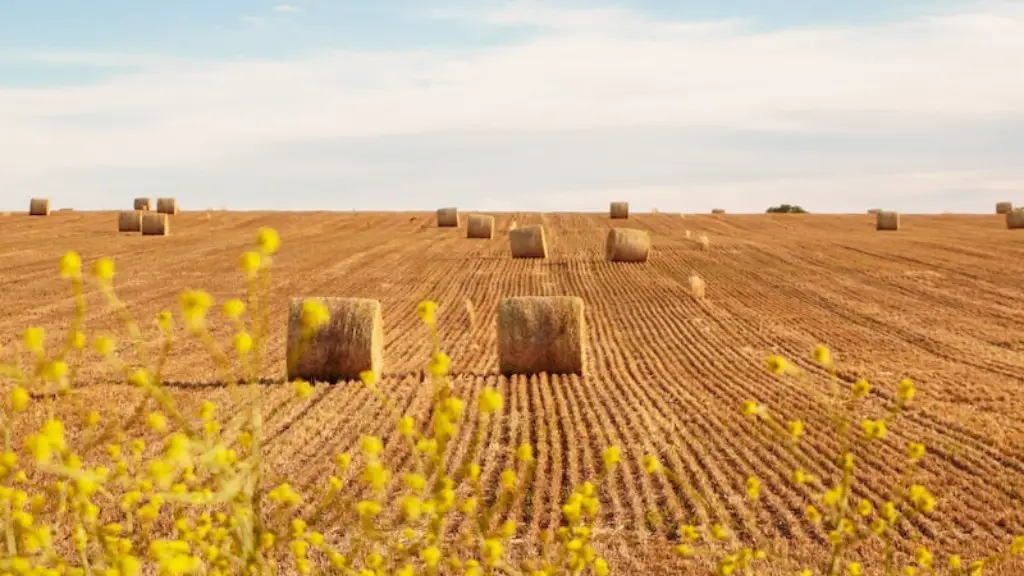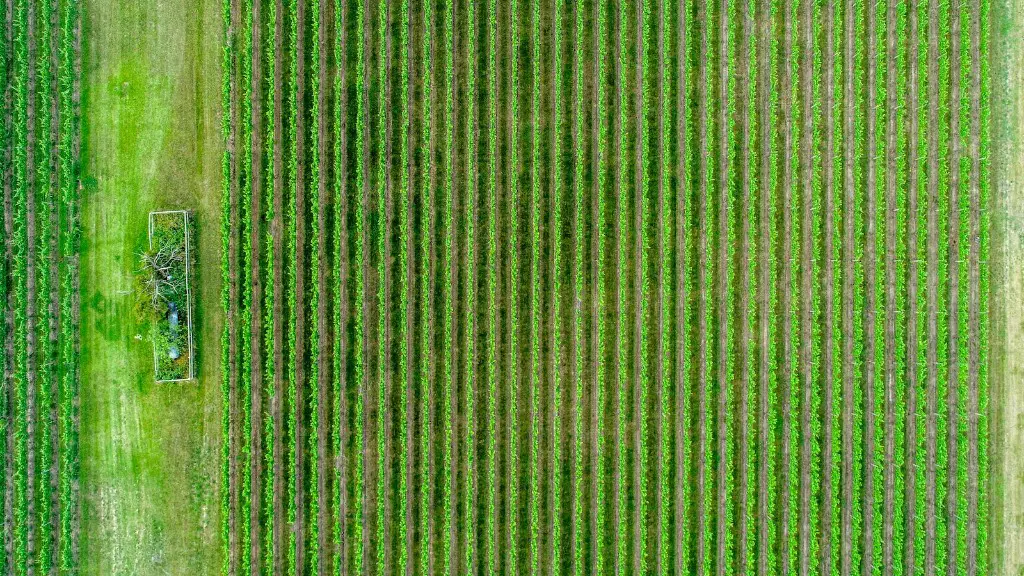Vertical farming is an emerging concept that is reinventing the traditional agricultural system. It refers to the practice of growing crops indoors in a vertically-stacked system, often in an urban setting. The key benefit of vertical farming is that it enables large-scale crop production in an area with limited space, while reducing the associated environmental impact. Additionally, as vertical farming is more technologically advanced than conventional farming, it allows for greater control over farming practices, leading to higher yields and better quality crops. Furthermore, it relies on hydroponics and other innovative technologies to reduce water waste, conserve energy and use fewer chemicals, while still producing a higher-quality harvest.
Vertical farming is an ideal solution for those living in cities, or the developed world, where land is scarce and limited. By using an innovative approach to farming, vertical farming offers a way to make urban agricultural production more efficient and sustainable. It also has the potential to reduce the environmental impact of urban farming, as it does not require soil to grow crops and does not need to use large amounts of water or chemical fertilizers.
Furthermore, vertical farming has the potential to drastically reduce food miles, or the distance food travels from producer to consumer. As the crops are grown closer to their destination, food miles are significantly reduced, meaning less fuel is used and carbon emissions are minimized. Additionally, the crops can be grown locally so that the produce is consumed immediately after harvesting, ensuring the freshest and highest quality produce reaches customers. Thus, vertical farming reduces the amount of food waste, as crops that are grown and delivered locally can be enjoyed at their peak.
Vertical farming also has the potential to significantly reduce the economic impact of food production. As the crops are grown in an indoor, controlled environment, there is significantly less water and energy used, as well as fewer inputs needed such as fuel, labour and chemical fertilizers. Additionally, vertical farming is much more efficient than traditional farming due to the controlled environment, and the use of innovative technologies, providing a more cost-effective mode of production.
Finally, vertical farming provides the potential to produce a wide variety of crops year-round, as the crops are grown in protected and climate-controlled environments. As the conditions can be tailored to the individual crops, this means it is much easier to maintain a consistently high output of nutritious, high-quality produce than would otherwise be possible, as crops are not subject to seasonal or geographic constraints.
Economic Benefits
One of the key economic benefits of vertical farming is that it does not require the same amount of land as traditional farming. As the crops are grown in stacked layers, the same amount of produce can be produced in a significantly smaller area. This greatly reduces the amount of land needed for production, which in turn reduces the cost of land acquisition and land preparation. Additionally, as the crops are grown in close proximity to the market, the cost of transportation is greatly reduced, as the produce does not need to be transported long distances, lowering transportation costs and reducing the associated environmental impact.
Additionally, vertical farming is much more efficient than traditional farming due to the use of an advanced technological system. This system automates the entire farming process and eliminates the need for human labour. Thus, it reduces labour costs, as fewer people are needed to tend to the crops, while also increasing productivity and ensuring consistent production of high-quality produce.
Furthermore, vertical farming’s reliance on hydroponic systems reduces the need for water, as the plants are watered directly, instead of relying on soil. This ensures more efficient use of resources, leading to beneficial economic returns for the farmers. Additionally, as the crops are grown indoors, weather conditions are not a factor, and inclement or unfavourable weather does not lead to crop damage. This further increases economic returns, as there is less risk of crop failure due to weather-related issues.
Finally, vertical farming is not just beneficial to the producers, but also to the customers, as the controlled environment of a vertical farm environment means that the produce is consistently of a higher quality. This increases the demand for vertically grown produce, as customers can easily identify their origin, leading to increased profits for the farmers.
Environmental Benefits
One of the major environmental benefits of vertical farming is that it significantly reduces water consumption. As the plants are grown without the use of soil, the water is circulated much more efficiently, reducing the amount of water that is needed to grow crops. Additionally, the controlled environment of the vertical farm eliminates the need for chemical pesticides or fertilizers, improving the quality of the environment and protecting local ecosystems. Additionally, as vertical farming does not require soil for cultivation, it minimizes soil erosion and degradation.
Furthermore, as vertical farming is highly automated, it also reduces the need for human labour. This eliminates the need for people to work in dangerous or difficult conditions, while also conserving energy and reducing the number of resources that people need to use. Additionally, as the crops are grown indoors, the risk of crop damage due to unexpected weather events is eliminated, leading to a more stable and predictable harvest, which can further reduce the impact of climate change.
Furthermore, vertical farming eliminates food waste and food miles, as the produce is grown, harvested and consumed locally. This ensures that fresh, nutritious produce is readily available to local customers, leading to better health outcomes, while at the same time significantly reducing the amount of fuel used for transportation and the associated carbon emissions.
Finally, as the crops are grown in a controlled environment, there is also significantly less risk of disease and pests, as the environment can be monitored and managed more effectively, leading to a healthier and more productive crop. Additionally, as the environment can be tailored to the individual crops, vertical farming allows for more specific and accurate production timelines, meaning that the crops will have the optimum growing conditions at all times, leading to higher yields and improved quality.
Social Benefits
Apart from the economic and environmental benefits of vertical farming, it also provides potential social benefits. As the crops are grown and harvested locally, this ensures that the consumers have access to fresh produce, leading to better health and nutrition outcomes. Additionally, as the crops are grown in a highly automated system, it eliminates the need for manual labour, reducing labour costs and enabling more people to access fresh produce that they may not otherwise be able to afford.
Furthermore, vertical farming also enables farmers to be more in tune with the local community, as the crops are grown close to their destination. This has the potential to create meaningful connections between the farmers and the local community, leading to increased loyalty as consumers get to know and support local producers. Additionally, it also strengthens the local economy, as the money spent on locally produced food is then re-circulated in the local area.
Finally, vertical farming has the potential to significantly reduce food insecurity for those living in urban or highly populated areas. By providing local, fresh produce, those living in poverty or food deserts can access nutritious food, which can improve health outcomes and quality of life. Additionally, as vertical farming is an efficient and cost-effective way to produce food, it can bring fresh produce to areas where it may otherwise not be accessible.
Political Benefits
Vertical farming also has the potential to provide political benefits, as it has the potential to reduce food insecurity on a global scale. As the crops can be produced in a highly efficient and controlled environment, this ensures that more food can be produced in a smaller area, which can be beneficial particularly in developing countries or regions where land is scarce. Additionally, as the crops can be grown in an urban setting, it eliminates the need for people to migrate to rural areas for work, reducing the impact of population fluctuations.
Furthermore, vertical farming also has the potential to significantly reduce the global carbon footprint, as it is powered by renewable energy sources, reducing greenhouse gas emissions. Additionally, it reduces the need for chemical inputs such as pesticides, fertilizers and herbicides, which have been linked to increasing global temperatures. As the crops can be grown in vertical stacks, this also eliminates the need for land to be cultivated, which significantly reduces emissions caused by land conversion.
Additionally, as vertical farming reduces water consumption, it also reduces the risk of water scarcity in developing countries, as the efficient water use reduces the need to extract groundwater. Additionally, as the crops are grown close to their destination, this reduces the number of food miles, meaning that fewer resources are needed for transportation, resulting in lower emissions.
Finally, vertical farming also has the potential to reduce poverty worldwide, as it can enable people to access nutritious food, improving their health and quality of life. Additionally, as the crops can be grown efficiently and cost-effectively, this increases profit margins for farmers, thus enabling those living in poverty to access resources to improve their lives.




